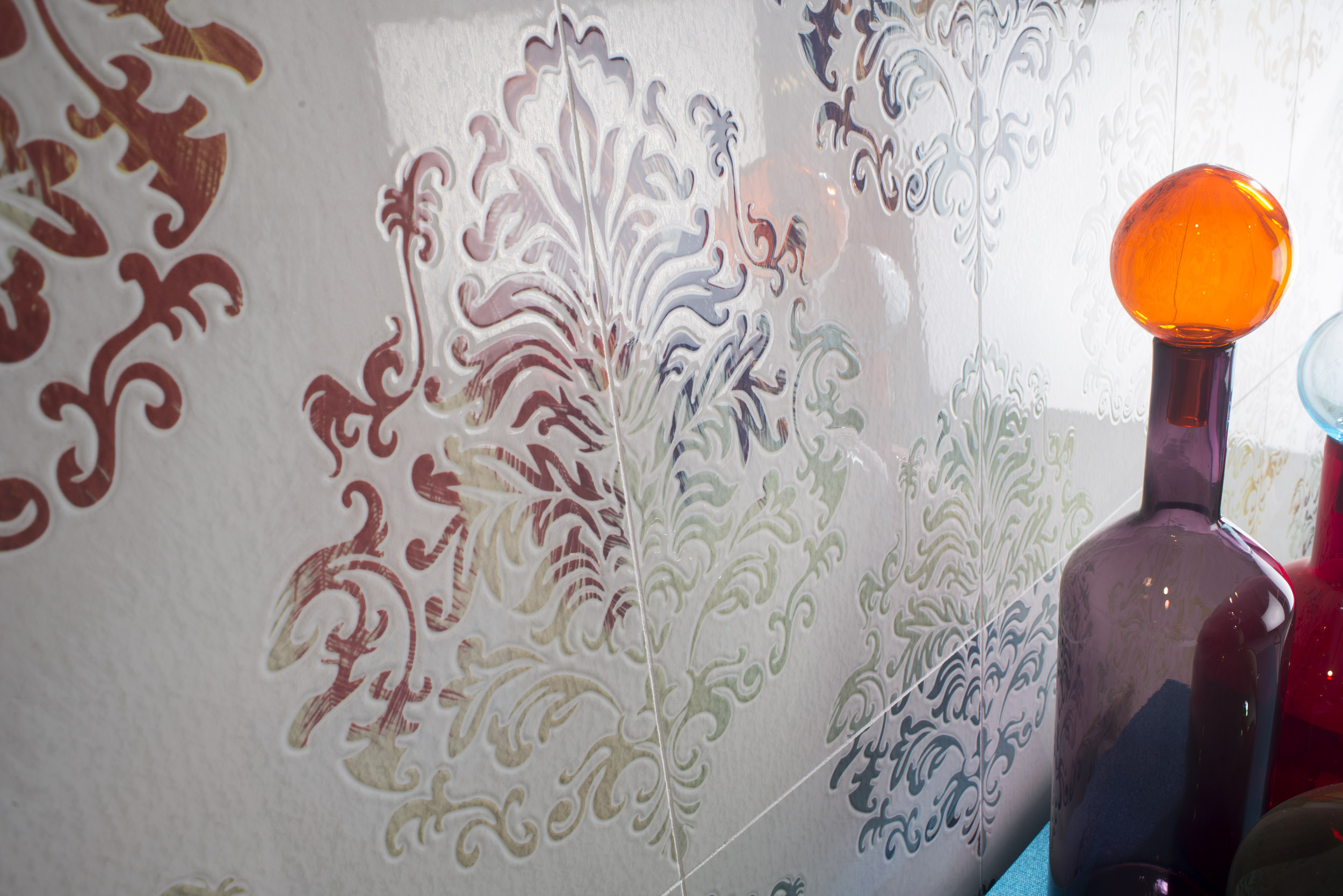In the ceramic industry, most of the processes and manufacturing tend to be more conservative, as they keep the traditions from centuries of labor. Luckily for companies and clients as well, more innovative ways of creating ceramics have been developed including the revolutionary addition of digital inks.
Most of the pigments and dyes used in the classic fabrication process have been around for decades, leaving little innovation in the coloring aspect of ceramics. Over and over, the same colors and designs were used throughout the years, waiting for a significant advance in technology that would break the barriers imposed by the limited resources.
Contrary to belief, changes in the pigments used in ceramics weren’t made for an aesthetic purpose but to satisfy the manufacturer’s need to reduce costs. New ways of coloring ceramics were needed to have a low impact on the economy but also in human health and the environment, features that companies also wanted to achieve.
Innovation in the creation of new pigments and inks, the inclusion of technology in the fabrication process and the reduction in the use of hazardous components made the ceramic industry more modern and opened a new range of possibilities to this material.
But conquering the next era in ceramic decoration would require a lot of scientific and technological research, to develop better pigments and the machinery to apply them correctly. Conventional pigments started to be useless, so manufacturers created new inks that were suitable for this new digital ceramic.
After a lot of trial and error, manufacturers finally accomplished a better color performance. This advances led to the creation of different types of inks, giving companies a wide range to choose from. Shifting from conventional pigments to digital inks, a new era for ceramics is born where design and art have no limits.
Within the ceramic industry, the incorporation of digital inks was one of the most revolutionary advances made, breaking all the limits that previous pigments had settled. On digital ceramics, you can have more intense colors applied to every design you could imagine, made with little effort and a great result.
Apart from the great performance in intensity and durability, digital inks mimic the CMYK color model, so the entire color palette is available for ceramic decoration. Colors are mixed digitally, so each tone is perfectly created to fit the expectations, being a great tool for getting an exact color or even imitate an existing ceramic to match.
Design possibilities are amplified thanks to the color palette available and also with the option to print imaginary, patterns, texts, logos and more on ceramics. Customization is achievable due to the digital ceramics, perfect for clients that want a special touch in their spaces trough material.
In addition to the digital inks, the developments in digital effects and materials, provided manufacturers with new textures in ceramics, lending even more decorative possibilities. By adding material, ceramics can have different textures, more contrast and also more brightness.
Besides the advances made in the inks, there are also new digital systems that are in charge of decorating and glazing the ceramics, transforming it into an automated process and adding up to the benefits of these new modern applications.
Due to the technological advances, we can obtain differences in ceramics aesthetic with new designs, color improvement, various finishes, and added texture, but also it affects positively the manufacturing process. Thanks to digital inks and materials, the production perceives a decrease in costs and time, being more effective. As we mentioned before, changes to the coloring process in ceramics weren’t made only to favor the material, but also to provide advantages to the production itself.
With these processes, the production line is shorter and the fabrication of ceramics takes less time than ever. It reduces as well, the number of supplies and helps the accuracy both in design and color palette. Furthermore, this digital advances makes it easier to develop a new product line in a short period of time, making the company more competitive within the industry.
The great impact that digital ceramics are having in the current industry affects mostly the production of pigments and dyes, though they are not replacing them completely. New digital inks, materials, and process need great knowledge and investment from the company but rewards them in better economic and aesthetic results.
It is a great time for ceramic manufacturing since there is an increase in its artistic possibilities, but also a simplification of the production process. These advances are providing ceramics companies a chance to apply their creativity in color and texture, while they benefit also in the fabrication of the ceramics, helped by the technical advances.
Digital revolution is upon the ceramic industry, that has been using the same process and pigments for decades, but now it is improved with the help of science and technical progress. A mixture of technological fabrication, high-quality inks, new textures and innovative designs establishes a world of possibilities for ceramic production and application.











